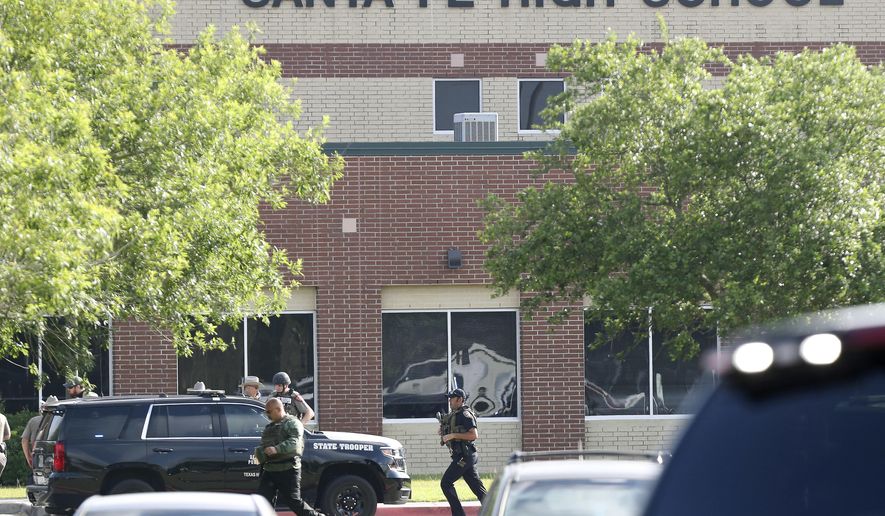
Just hours after the nation’s latest school shooting, the debate began anew: Are American schools built in a way that makes them easy targets? Are there too many windows, too many entrances and exits and too few security features?
The questions expose yet another divide, with Second Amendment activists and some security experts calling for safer school designs and some gun-control advocates saying it’s a distracting side issue that avoids more meaningful action.
The debate began after the 1999 mass shooting at Columbine High School in Colorado and gained more attention in the aftermath of the 2012 shooting at Sandy Hook Elementary School in Newtown, Connecticut. On Friday, in the hours after a student shot and killed 10 people at a high school in Santa Fe, Texas, the state’s lieutenant governor suggested again that it was time to examine school layouts.
“There are too many entrances and too many exits to our over 8,000 campuses in Texas,” Lt. Gov. Dan Patrick said, explaining that those points can’t all be guarded.
Gun-rights activists, led by the National Rifle Association, have pushed for a “hardening” of schools, including training and arming educators and even keeping shrubbery and landscaping farther away from school buildings so there are fewer blocked viewpoints. Reducing the number of entrances is considered another way to prevent shooters from getting inside undetected.
According to a report last year in Education Week, a trade publication, the average age of an American school is 44 years with major renovations dating back more than a decade. Older buildings were designed without today’s worries of active shooters and terrorism.
They have lots of “nooks and crannies,” isolated areas that are difficult to supervise, as well as old hardware on classroom doors and main offices that aren’t located near the main entrance. Other problems include old public-address systems and no telephones in classrooms, said Kenneth Trump, president of the National School Safety and Security Services, a Cleveland-based consulting firm.
When it comes to designing schools, educational considerations create some natural tension with security needs. Studying in places with lots of light, for example, is thought to improve learning. That was the philosophy behind one school constructed just last year with floor-to-ceiling windows, Trump said. But those same windows could make students and staff easy targets for a gunman.
He agrees that a large number of entrances can make a school vulnerable. More doors bring a greater risk that someone will prop one open or that mechanical issues will prevent a door from being closed or locked. It’s also harder to monitor who is coming and going....
And even if a front entrance is fortified with security systems, there are usually other ways in, such as the cafeteria where food deliveries are made or the gym.Still, Trump said, no amount of architectural planning or design will replace mental health treatment, emergency drills and training and the ability to identify potential school shooters ahead of
